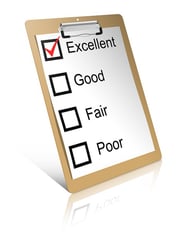Take a step back to think about your organization.
Think about all the points of contact that customers go through with your company throughout their time in your sales pipeline and then as customers. Smart organizations realize that every one of these points of contact, frequently called touchpoints, are extremely important and valuable. Whether it's the first time you talk to someone, a customer changing their service, or a prospect buying your product, every touchpoint a person goes through shapes the way they feel about your company and influences their lifetime value.
Hear Matt read this post (subscribe to our podcast):
Learn more about touchpoints here.
Touchpoints provide a two-way flow of information. In addition to influencing the customers' opinions of your company, touchpoints also give you insight into the effectiveness of your own processes by allowing you to survey customers and measure their opinions to see how satisfied they are with your processes. A high satisfaction rate from customers on each individual touchpoint confirms that you're on the right track.
A common mistake, though, is to narrow in on the touchpoints to the extent that you fail to examine the end-to-end satisfaction of the customer's journey. It is possible that even when satisfaction ratings are high during each touchpoint, the overall satisfaction of the entire customer’s journey can be poor. Similarly, many Lean practitioners overlook the end to end journey as well.
Lean aims to reduce waste and improve quality. While Lean practitioners strive to reduce waste, many forget that improving quality means taking a look from the customer’s point of view and reviewing the entire journey, not just the individual steps. The journey is the big picture and although each individual step is important, looking at the end to end process that a customer will take is paramount in being able to improve the entire system.
What is key for organizations is understanding customer needs. Being able to understand a customer’s needs and visualize their journey from end to end is important to satisfy customers and increasing the quality that your organization provides.
Streamlining some of these many touchpoints can increase customer satisfaction. Eliminating unnecessary steps for customers and making touchpoints convenient for them can go a long way in how they view the entire process. Eliminating extra and unnecessary touchpoints can make things more convenient for customers because their time is a valuable commodity.
It can also make things more efficient for your organization because it can take less time to manage customer’s requests and less time to move consumers through the entire process. This could open up room to increase the total volume of customers.
Breaking down a process into smaller steps can be important to look at where a bottleneck can be occurring. However, when each individual part looks good, take a step back to view the entire end-to-end journey. Evaluating the process goes hand-in-hand with Lean. When you’re having trouble, look at the big picture. You may find your answer.
![The 7 Wastes of Lean [Free eBook]](https://no-cache.hubspot.com/cta/default/326641/b3d32e45-87f5-4557-865f-772d99911733.png)


Add a Comment